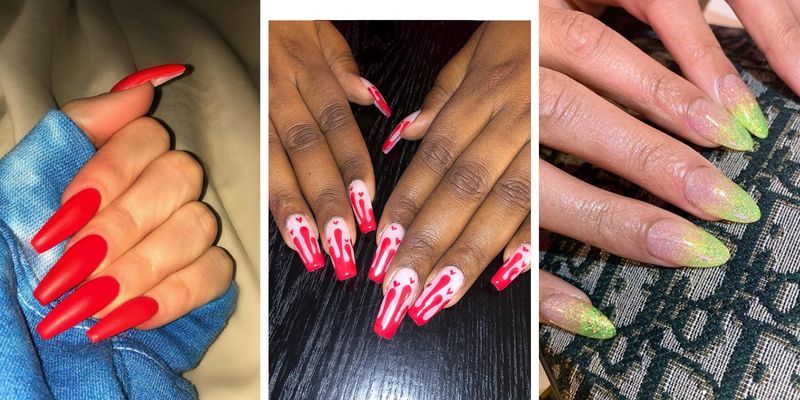Last year, demand for acrylic nails surpassed traditional manicures for the first time. With the market only set to grow, it’s time we talk about the environmental impact of plastic-based artificial nails.
Conversations about the environmental impact of our beauty routines have become commonplace in online spaces and in marketing campaigns launched by skincare and make-up brands themselves.
Still, there’s one beauty regime that is rarely talked about in terms of sustainability, despite the fact that it involves gluing literal pieces of plastic to our fingertips. Yeah, I’m talking about acrylic and press-on nails.
A long-term lover of nail extensions myself, I’ve often wondered mid-manicure where all those bits of plastic end up once they’ve been filed down into dust (likely tiny microplastics) or cut off using salon-grade nail clippers.
It’s possible others have had the same thought, given that the demand for acrylic, gel, and press on nails have soared in recent years. The global artificial nails market size is only estimated to grow further, reaching a value of USD $303.92 million by 2027, which will ultimately result in a lot more waste.
With plastic pollution being one of the most pressing environmental nightmares of our time – especially with the discovery of micro and nano plastics – what are us beauty queens meant to do?
If you often wear gel nails, this tweet is for you. Gel nails are made by applying an acrylate-based nail. Acrylates are a group of chemicals that are derived from acrylic acid. They contain methacrylate chemicals-found in gel & acrylic nails. They're widely used in #plastics.
— 𝗥𝘂𝗳𝗶𝗻𝗼_𝗩𝗮𝗿𝗲𝗮 #PlasticsTreaty (@rufino_varea) May 7, 2023



















